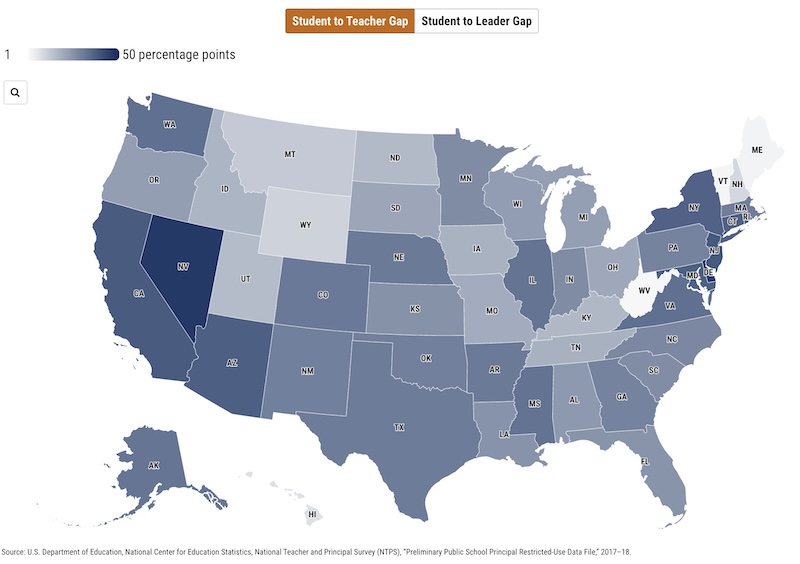The U.S. school system needs one million more teachers of color to close the yawning diversity gaps between students and classroom educators. And now there’s also a map to prove it.
“It’s quite alarming,” says Javaid Siddiqi, the former Virginia secretary of education and now the CEO of Hunt Institute. The organization created the map for the One Million Teachers of Color campaign, which is a collaboration by several equity advocacy organizations. “[School leaders] need to be aware how their share fits in with the larger state share and how the state share fits in with the larger one million,” Siddiqi continues.
Superintendents can’t close the gap by themselves but there are several things K12 leaders and their teams can do once they are aware of the scope of the problem, Siddiqi counsels. Grow-your-own programs are gaining traction in many districts as educators look to move paraprofessionals into full-time teacher roles and inspire high school students to put education at the center of their college and career plans.
“Superintendents are sitting on goldmines,” Siddiqi attests. “They are graduating young people of color and they know who the five-star African American, Hispanic and AAPI students are.”
Approximately 40% of schools lack even a single teacher of color. And, as most educators know, extensive research shows that if students of color have even one teacher of color while they’re in school they are more likely to graduate, be ready for college and be enrolled in AP and other college-level classes. And they are also less likely to be suspended. “It improves the things we want to improve and reduces the things we want to reduce,” Siddiqi notes.
The same holds true for gaps between teachers and school leaders, and the U.S. education system now has a diversity gap of about 30,000 administrators. When teachers of color work with administrators of color, they feel less isolated and are less likely to leave, he adds.
Digging into the diversity gaps
The map measures the gap between the percentage of students of color enrolled in public schools and the number of teachers of color in each state. The numbers vary throughout the country’s region—for instance, some of the states with the biggest and the narrowest gaps are in the Northeast. However, those numbers may be skewed by the low number of students of color in states such as Maine, New Hampshire and Vermont.
More from DA: U.S. math scores take a hit in global assessment. But there’s good news
Some of the biggest gaps are in the West, and in states considered the most politically “blue.” California, for example, needs about 139,000 teachers to close its gaps.
On the other hand, the smallest gaps are concentrated in states with tiny populations of students of color.
These 10 states have the largest gaps based on the following percentage points:
- Nevada: 46.5
- Delaware: 45.1
- New Jersey: 40.3
- California: 39.7
- Rhode Island: 39.3
- Arizona: 39.1
- Maryland: 38.8
- Connecticut: 38.5
- New York: 38.2
- Washington & Virginia: 35.5
These 10 states have the smallest gaps:
- Vermont: 9.1
- Maine: 9.5
- West Virginia: 8.6
- New Hampshire: 15
- Wyoming: 15.9
- Montana: 17.6
- Utah: 20.5
- North Dakota: 21
- Kentucky: 21.3
- Idaho: 21.9

View the rest of the data included in the map, which also measures diversity gaps between students of color and school leadership.



